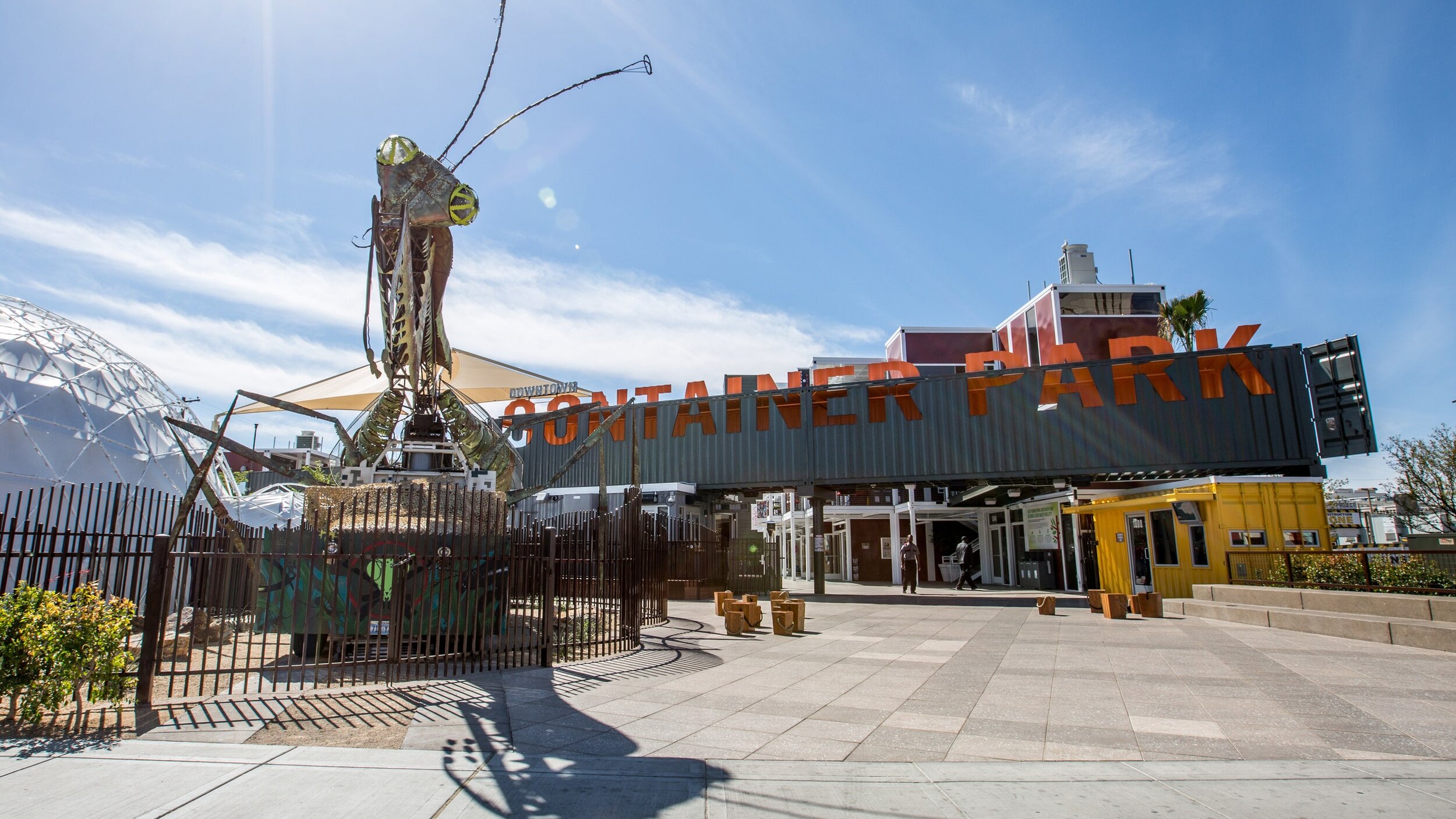The First Massive Sculpture Funded by NFTs
After a year of no events, we are excited about the possibility of NFTs to be a new funding source for artists, and we are attempting a world first: build the first massive, real-life sculpture funded by NFTs.
“NFTs stand a great chance of significantly helping many kinds of public goods, especially of the creative variety, at least partially solve their chronic and systemic funding deficiencies. If the conception of legitimacy for NFTs can be pulled in a good direction, there is an opportunity to establish a solid channel of funding to artists,” -Vitalik Buterin, March 22 2021
That arts funding has suffered during the pandemic needs little explanation. Even in the case of our arts collective, Heavy Meta Arts, we had 6 fundraising events planned for 2020. We ended up having to cancel 5 of them due to the pandemic, and having all six go right is not optional for us.
To keep doing what we do, we need to produce 6 nearly sold-out events, year after year, to pay for shop space, materials, electronic components, welding wire, argon, propane, fuel for vehicles, wood, insurance, and much more. The pandemic has been devastating not only to us, but to every artist, musician, and entertainment industry professional who relies on being able to fill a music venue with hundreds or thousands of people.
2021 has presented a unique opportunity, however: the popularity of NFTs has caused many Ethereum observers, investors, artists, and celebrities, to think deeply about what NFTs could do for arts funding: finally, a measure of scarcity, legitimacy, and a huge wave of giving, directly to artists.
The most headline-grabbing news, of course, focuses on celebrity NFTs. Vitalik Buterin, founder of the Ethereum Foundation, warns us of the following: “If NFTs simply become a casino that largely benefits already-wealthy celebrities, that would be a far less interesting outcome.”
We aim to be the world’s first massive sculptural work funded by NFTs. We believe this novel use case, if successful, could be replicable by artist collectives the world over. As we outlined in Return on Community, the impact of giving to a project like ours benefits over 100 people, not just an individual artist, and the impact has reverberations throughout the city and region in which the project is hosted. We hope you will join us on this journey.
Donate Now (fiat or ETH)
FAQ: Aren’t NFTs bad for the environment?
Like most human activities, cryptocurrency transactions have a carbon footprint. How much, exactly? We estimate that the minting and sales of our 10, single-edition NFTs will have a carbon footprint of between 1 and 2 tons of CO2.
This is equivalent to 1 - 2 round trip flights to Tokyo. While not ideal, this is considerably more carbon-efficient than holding a series of fundraiser events where at least one artist or attendee flew to the event.
Nonetheless, we intend to purchase high-quality, CSA Standard-certified Canadian carbon offsets from Less.ca — we chose them because they consistently rank toward the top in terms of “additionality,” meaning: would this program exist, if not for the carbon offset program? In this measure, they are among the best.
Return on Community: the Beautiful Foolishness of Making Big Art
We were sitting in a dimly lit cocktail bar on Las Vegas Boulevard in 2013 when Tony Hsieh, CEO of Zappos, asked us if we’d like some shots of Fernet.
Downtown Las Vegas
We were sitting in a dimly lit cocktail bar on Las Vegas Boulevard in 2013 when Tony Hsieh, CEO of Zappos, asked us if we’d like some shots of Fernet. To say it’s an acquired taste is a serious understatement, but the minty, herbal blend is somewhat of a “secret handshake” in certain circles. We agreed. What he laid out for us next was a simple, yet stunningly grand vision of the downtown Las Vegas of the future: an accelerator for a concept called “return on community.”
Together with tours led by Downtown Project, talks we attended, and the informal nightly parties put on by some of the startups that had recently located to Vegas, the idea of “return on community” (ROC) became clearer to me. If this is the principle that guides you, in addition to, or even instead of “return on investment” (ROI), decisions that would seem antithetical to running a profitable business, or even downright bizarre, start to make sense. Making big art is a lot like this.
We moved back to Toronto a few years later, after living in San Francisco for three years. We started thinking about the life in the Bay Area we were leaving behind. I had a realization: almost every single friendship we had in San Francisco could be traced to a single art project: an art car called The Janky Barge. Every night out, every lunch shared, every text message, every conversation, every afternoon in the park: all set in motion by these people’s connection to one project, whether they were directly involved, or friends, or friends of friends.
Unlike a piece of installation art, an art car is not an ephemeral, one-time, site-specific glimmer. An art car of a certain scale creates a huge impact in the city in which it was built, and possibly many others. There are several effects on the community from the project:
The shop space used to build the art — this becomes a community hub where people are constantly learning new practical (and professional) skills such as welding, carpentry, and special effects
The “home events” — a regular drumbeat of fundraisers that raise the requisite capital and operating expenses for the art, while adding to the dynamic of the city, and fostering new connections and friendships
The “away events” — tour dates where the art can be displayed at events such as municipal art festivals, music festivals, and concerts, anywhere the car can drive (a unique benefit of building sculptures on wheels!)
The art itself — a big, whimsical, mobile, piece of art that inspires people to believe in larger than life possibilities
The video and audio — the recorded media from events is its own art
Building a city in the middle of the desert takes a certain amount of foolishness, whether that city is Black Rock City or downtown Las Vegas. You have to believe, deep in your heart, that a highly improbable number of things will go right.
Making big art also requires a certain amount of foolishness. A lot of things can go wrong. Running out of money is extremely common. The artists themselves being bankrupted by the art is not unheard of. The greater benefits are never fully seen by the creators. Making big art requires faith that, not only will everything be “alright in the end,” but that the future will be better than the present.
We define Return on Community as the idea that “Every decision we make should grow or enrich the larger community around us.”
Why is it that we always seek growth, or going bigger, or teaching more? The answer lies in something discovered by mathematician Marcus Du Sautoy. He writes:
“There is a mathematical pattern that connects all cities across the world, transcending political and geographical boundaries. And it can be understood by a single magic number: 1.15. Each time the population of a city increases by 100 per cent (in other words doubles) the social and economic factors scale up by 115 per cent.
So, if you compare a city with a population of one million people to a city of two million, then instead of the larger city having twice as many restaurants, concert halls, libraries and schools, you find instead an extra 15 per cent on top of what you’d expect.”
Tony Hsieh understood this, and this is precisely why he chose to locate the new Zappos headquarters in downtown Las Vegas instead of building a new office park in suburban Henderson: the infrastructure of innovation is helped along by the serendipitous encounters that the “great collider” of a city allows.
We believe this pattern follows in building community as well. Every new person that is brought into the fold, every shop that is opened, every skill sharing meetup, and every event, help increase the vibrancy of the arts and music community slightly more than the sum of their parts.
This is what we mean when we say “return on community.”


